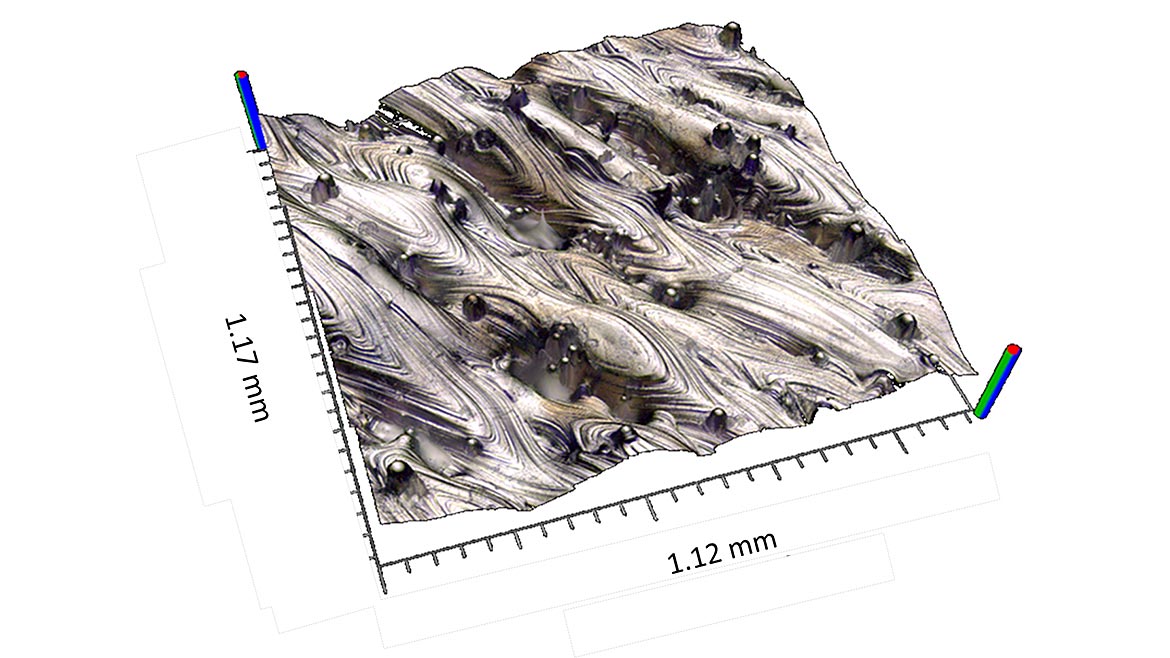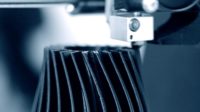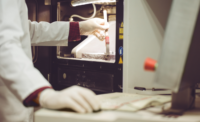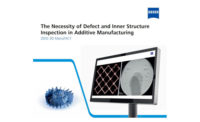Over the last few decades, additive manufacturing (AM) has fundamentally changed the way that manufacturers approach product development. AM is a uniquely disruptive technology. Twenty-five to thirty years ago, it changed the manufacturing paradigm by altering the way that manufacturers produced prototypes. Today, it is disrupting the way that manufacturers produce end-use parts and components and is increasingly seen as a truly viable production technique. Now the conversation among manufacturers is around the most judicious use of AM for production, its advantages, where the sweet spot is in terms of production volumes, key opportunities, and barriers to entry. Many of these barriers relate to precision quality control of AM parts, which challenge traditional methods of surface metrology.
With the focus today being on the use of AM for production, the analysis of the accuracy and repeatable tolerance attainment of AM has become a far more critical issue. For production applications, unlike prototyping, just “good enough” is no longer acceptable. If an AM part is integral to a safety critical aerospace or medical application, it is essential to achieve dimensional and material tolerance targets consistent with design intent. It is here that the role of metrology to validate the quality of finished parts is so important.
Addressing The Issues
Legacy manufacturing processes for metals and plastics have established quality control methods for validating and measuring parts. The production processes are understood, as are the most critical dimensional and surface finish requirements. However, AM produces parts layer by layer, and this opens up an array of unique issues that can affect the integrity of a finished product, and also a unique set of surface characteristics that make the job of measuring and validating that much more difficult.
The AM sector is working feverishly to tackle the metrology and validation conundrum, and all key players acknowledge the fact that measurement and validation of AM parts is a big deal today. In addition, AM technology providers are now developing in-process metrology (IPM) solutions to overcome the specialized challenges of verifying the integrity of AM processes.
AM technologies and metrology techniques have also captured the attention of professional societies that organize conferences and symposia worldwide. These include the American Society of Precision Engineering (ASPE), the International Society of Optics and Photonics (SPIE), and the International Academy for Production Engineering (CIRP).

Metal AM embraces geometric complexity.
Am Metrology Research
In the search for relevant metrology critical to process control, industry is still trying to understand what to look for on and under the surface of an AM produced part, and how this relates to part functionality. Surfaces of AM parts challenge existing surface topography measurement and defy characterization using standardized texture parameters because of high surface slopes, voids, weld marks, and undercut features.
Research into new and improved metrology for AM is advancing through a wide range of industry and academic partnerships. An example is work at the University of Nottingham, where the Manufacturing Metrology Team (MMT) led by Prof. Richard Leach is investigating the full range of solutions, from high-precision interference microscopy to X-ray tomography of the internal structure of completed parts.
Another example of leading-edgeresearch is at the University of North Carolina at
Charlotte, where Prof. Christopher Evans and colleagues have been using interferometryand electron microscopy to study AM materials in collaboration with the U.S. NationalInstitute of Standards and Technology (NIST), and Carl Zeiss GmbH at Oak Ridge National Laboratory (ORNL). These researchers have been studying Inconel 625 — a high temperature Ni superalloy for AM that exhibits an intriguing variety of surface signatures. These surfaces have areas rich in oxide films that are visible in true-color, 3D surface topography maps obtained with interference microscopes. These instruments also serve as excellent workhorses for examining large areas with high detail, such as distorted weld pools, by assembling or ‘stitching’ together multiple high-lateral resolution images each with millions of data points.

The surface of an AM part taken using a ZYGO system.
Post-Process Metrology
Measurements of AM parts post-process serve to validate conformance with design intent, and to provide clues into fabrication problems left by surface signatures. However, the uniqueness of AM processes and produced parts lead manufacturers to use an array of different mechanical and metrology verification techniques. They adopt an empirical approach as no one solution is trusted to provide accurate enough data. Gage Repeatability and Reproducibility (R&R) is used as a stand-in for a more rigorous measurement uncertainty approach. As a consequence, AM parts are often “over-tested” to improve confidence, but this means extra time and extra cost, areas that must be addressed to make AM for production more viable.
The open question is how to improve this situation for greater efficiency while maintaining confidence. The answer is for metrology solutions providers to adapt existing metrology technologies to better align them with the unique characteristics of the AM process and end-use AM parts, which are characterized by irregular, steeply sloped surface topography that many measurement technologies fail to capture.
As an example, 3D optical profilers use coherence scanning interferometry (CSI) technology to provide high-accuracy AM metrology tools to industry. These instruments use hardware and software upgrades as part of a package of improvements that make the instruments much better suited to AM parts. This significantly improves the baseline sensitivity of CSI and enables high-dynamic range (HDR) operation making it valuable for a wide range of parts, from steeply sloped smooth parts to exceptionally rough textures with poor reflectivity. Additionally, HDR measures parts with a wide range of reflectance, often a struggle for instruments that use interferometry as a measurement principle.
Summary
With AM now an established production technology for certain applications, there are barriers to mass adoption that are being addressed, including the need for in-process and post-process metrology technologies that can validate the quality and accuracy of the parts produced. AM parts have a unique set of characteristics that render traditional measuring technologies impotent in some situations, and today innovative metrology technologies are being developed that can provide meaningful measurement data efficiently and cost-effectively. Only when such issues are addressed will the use of AM become mainstream as a viable production technology across an array of industry sectors and applications.
Acknowledgements
Many thanks to Chris Young, PYL Associates, for great discussions and contributions to this article.



